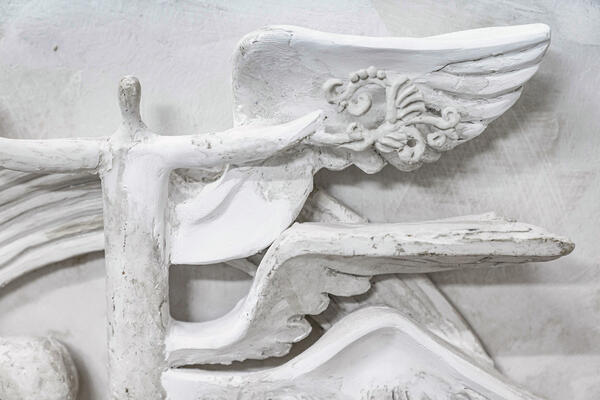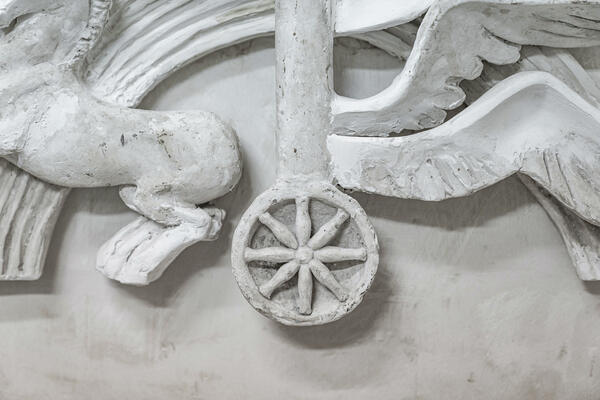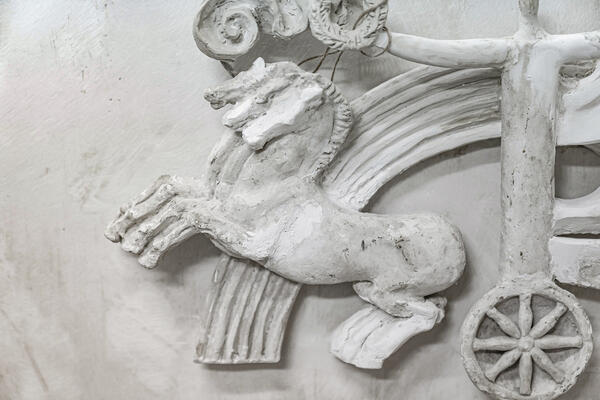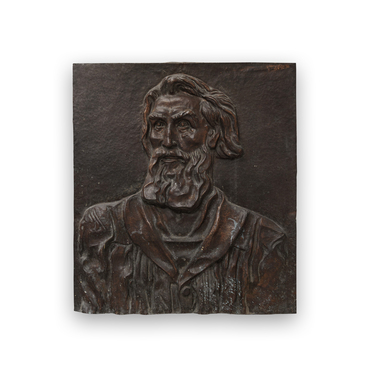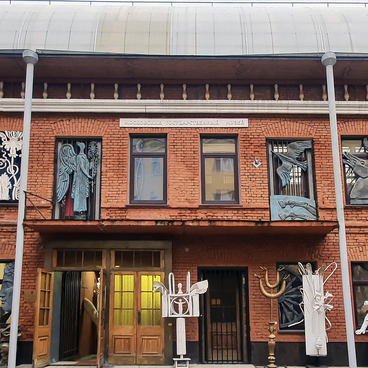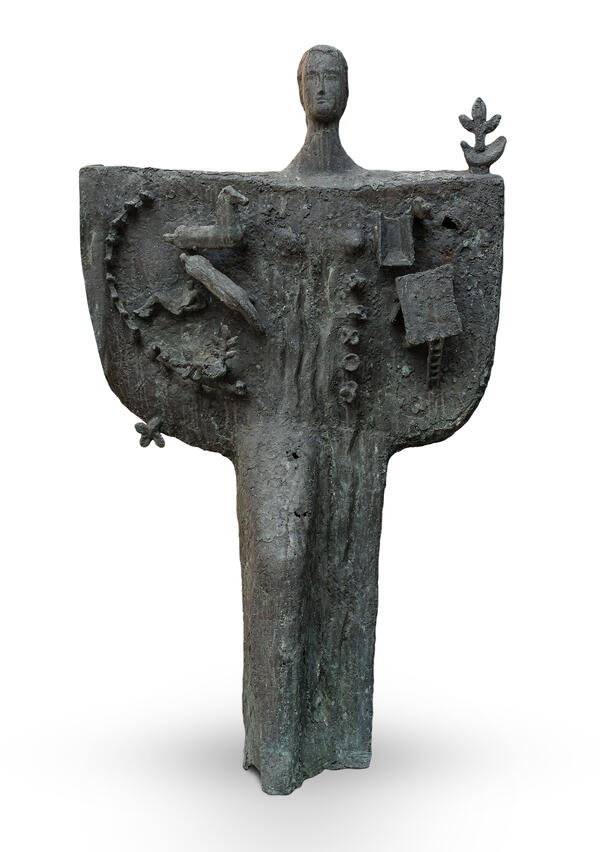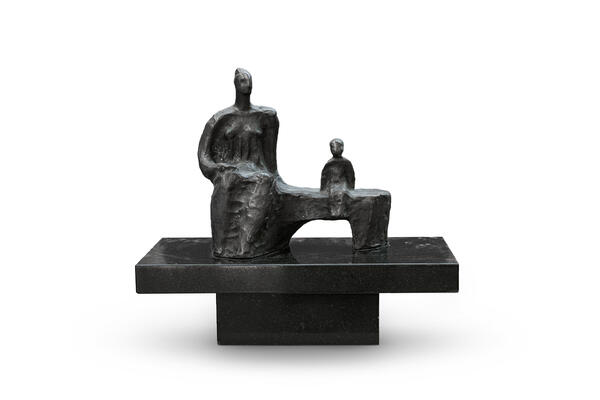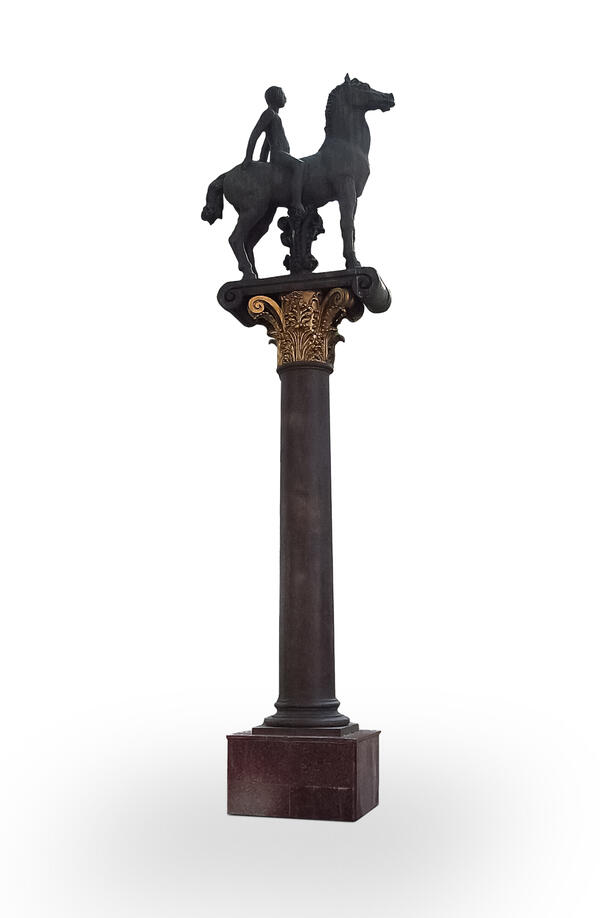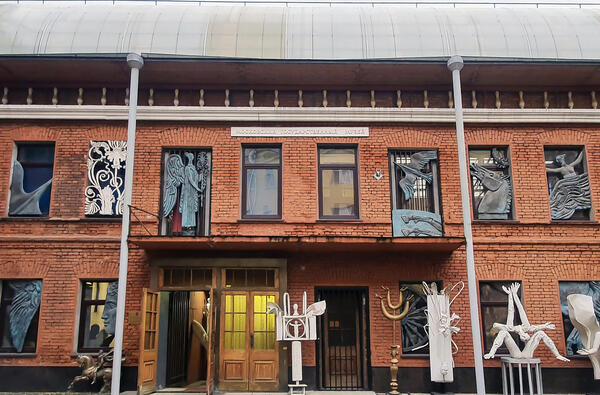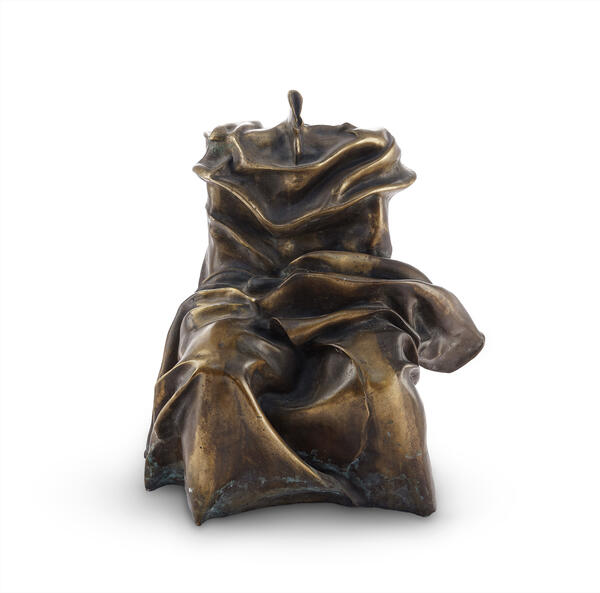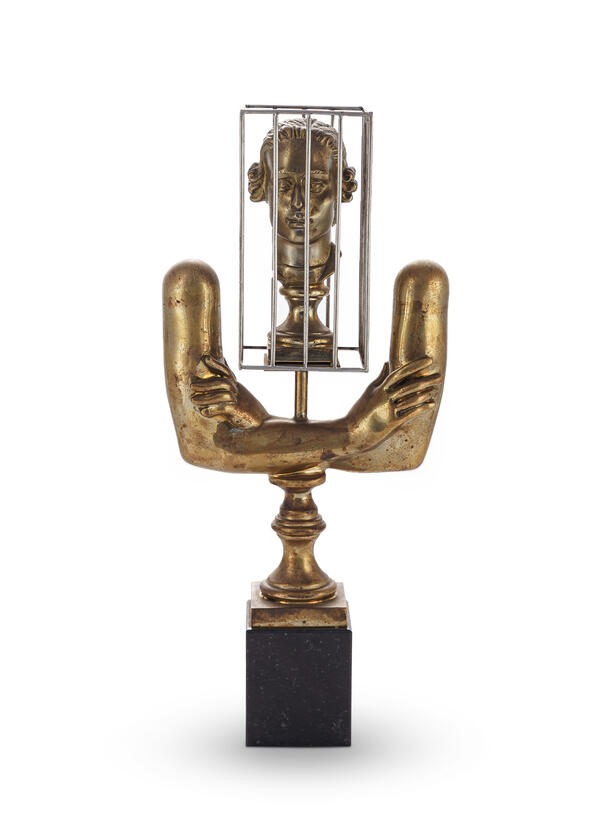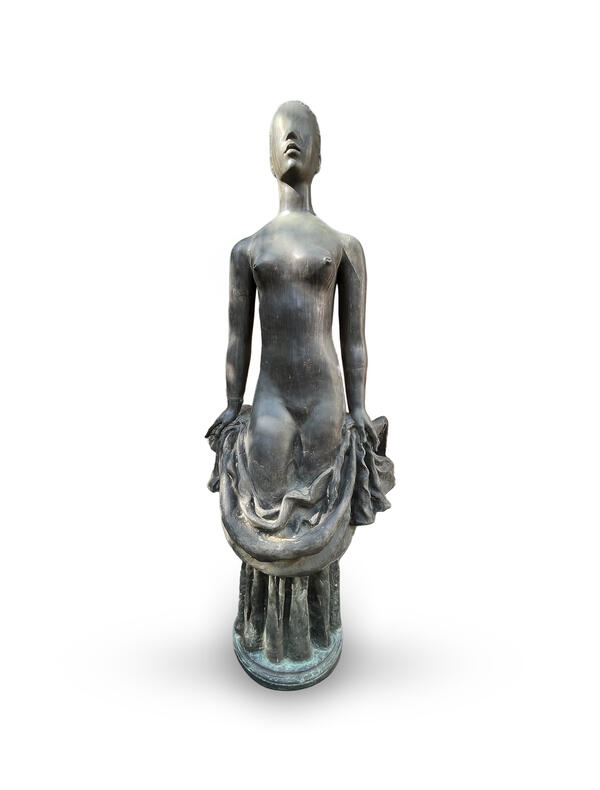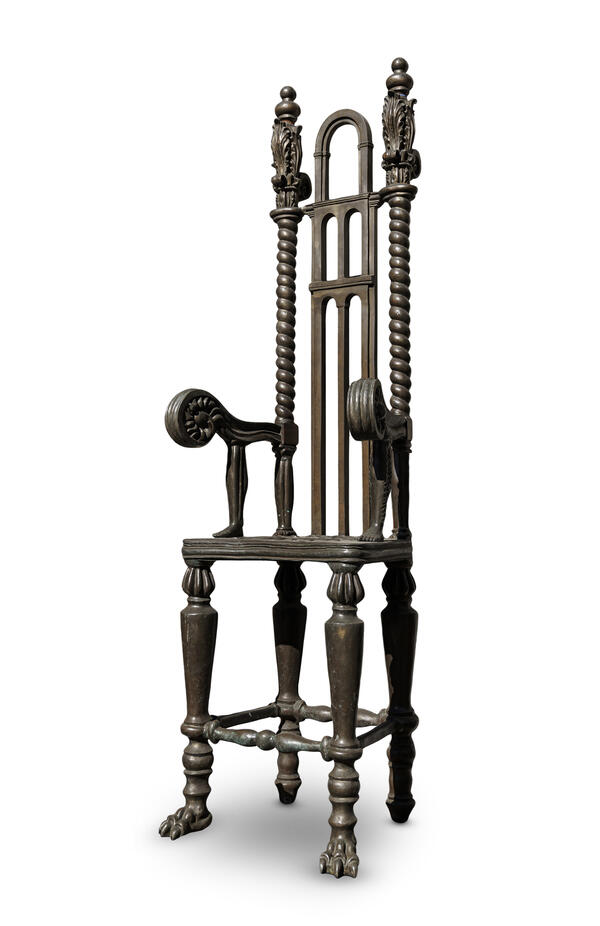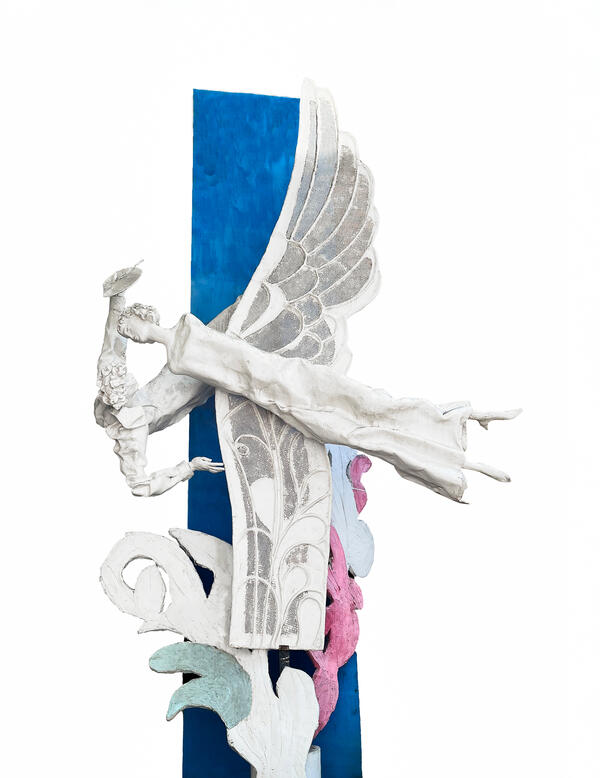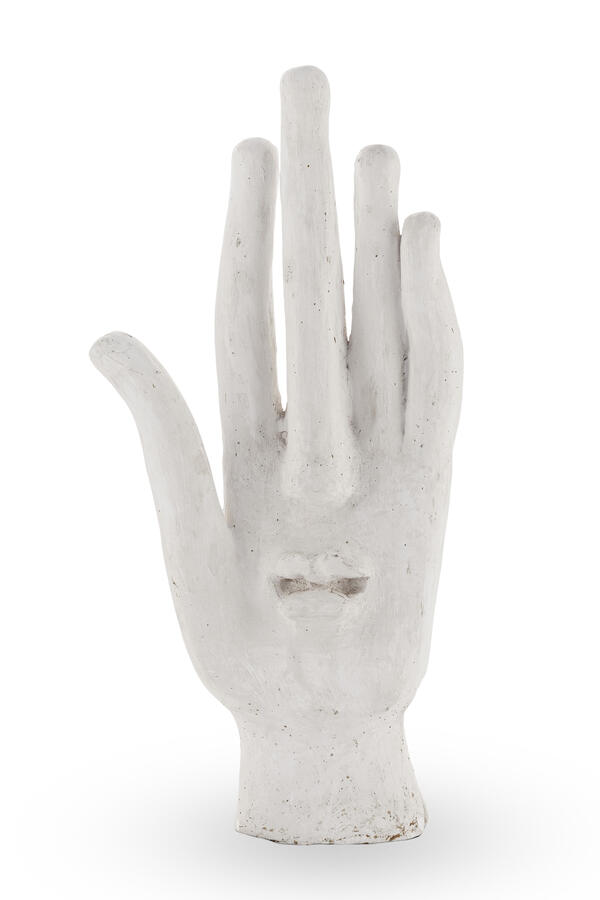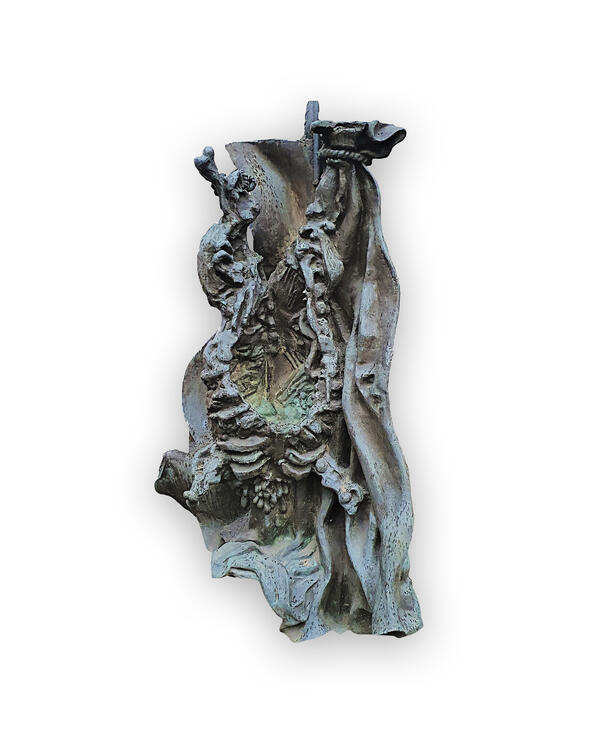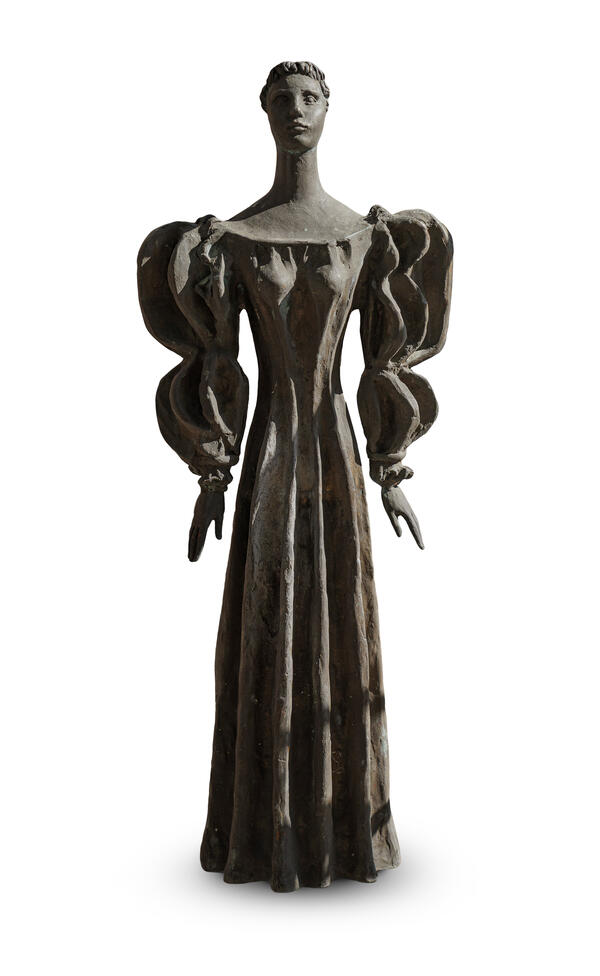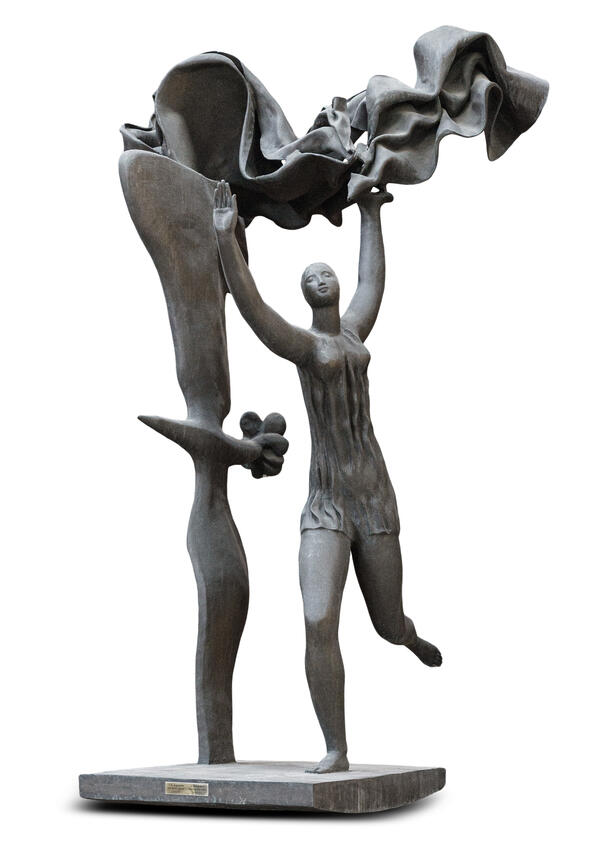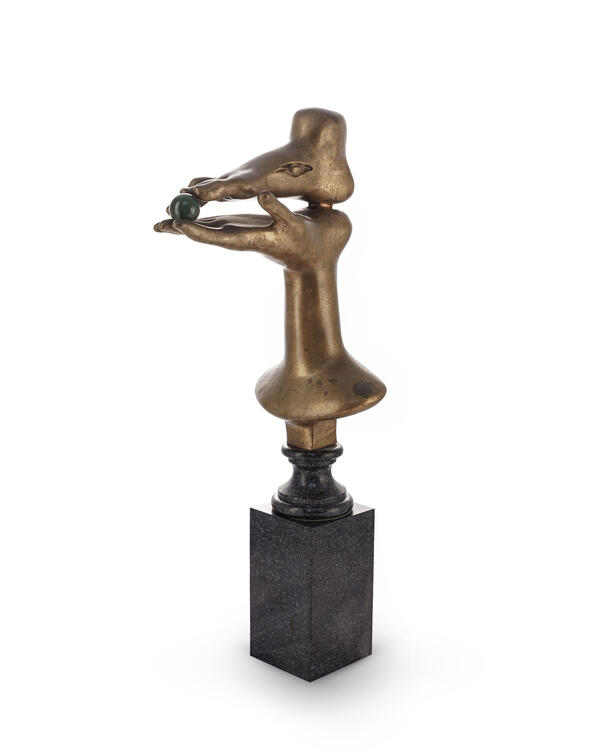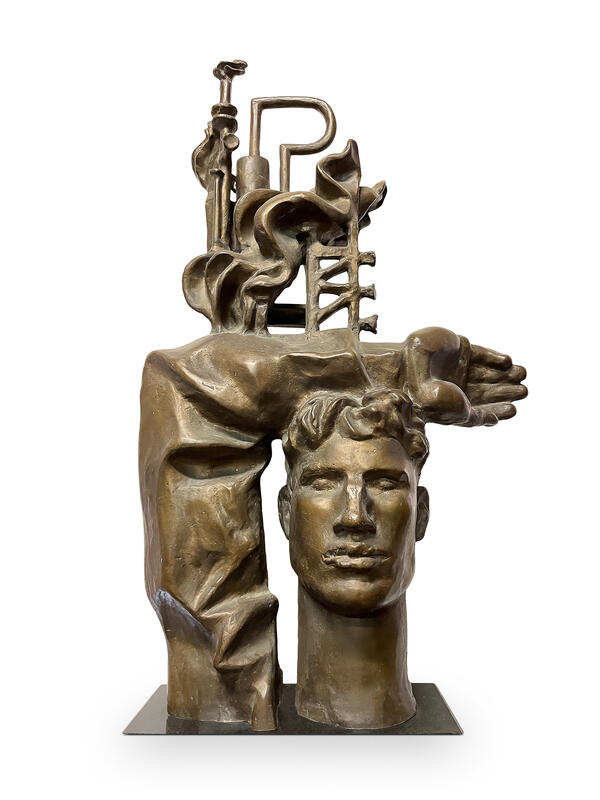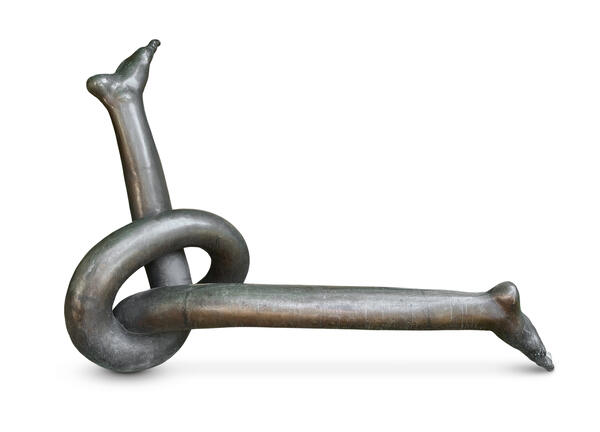“Muse” was created by Alexander Nikolayevich Burganov when he was a young graduate of the Stroganov Institute. It was designed for the Palace of Culture of Metallurgists in Izhevsk. In professional and critical literature, this work is called “a manifesto of a new sculptural language and a new synthesis of architecture and sculpture.”
In the late 1960s and early 1970s, there was a shift in Soviet architecture. The classical architectural order, with its colonnades, profiled cornices, and arches, was abandoned overnight. Instead, a new architecture was formed with smooth white walls and empty planes of large monolithic volumes.
This new architecture emerged as a response to changes in society. It was for this type of building that the displayed relief was created. It depicts three winged horses carrying a muse. In her outstretched hands, she holds her attributes — a wreath of glory and a lyre. The composition was created using the technique of forged copper, which was popular for a short period in the 1970s but is rarely used today. Sheet copper sculpture has been known since ancient times. It was particularly prominent during the Hellenistic period. The process involved hammering a thin sheet of metal onto a mold to create a shape. An example of this technique is the Arch of the General Staff Building in St. Petersburg.
The collection of the Burganov House includes the first plaster model of this relief, which later became the basis for the monumental composition.
By using minimalist artistic means, the sculptor developed a new language in plastic arts. The muse opens her arms wide, and her body turns into a column. The composition is both dynamic and stable. Horses race, a bird soars, waves of drapery ripple, and a whirlwind rotates in all directions, covering the entire large architectural plane. In the center, the muse rises above everything, combining all the rhythms and motifs into a single ensemble. One might say that the muse of Alexander Burganov became a true muse for the new architectural relief of the 1970s.
The bas-relief “Chariot”,
created according to the presented plaster model, still adorns the building of
the Palace of Culture of Metallurgists in Izhevsk.

